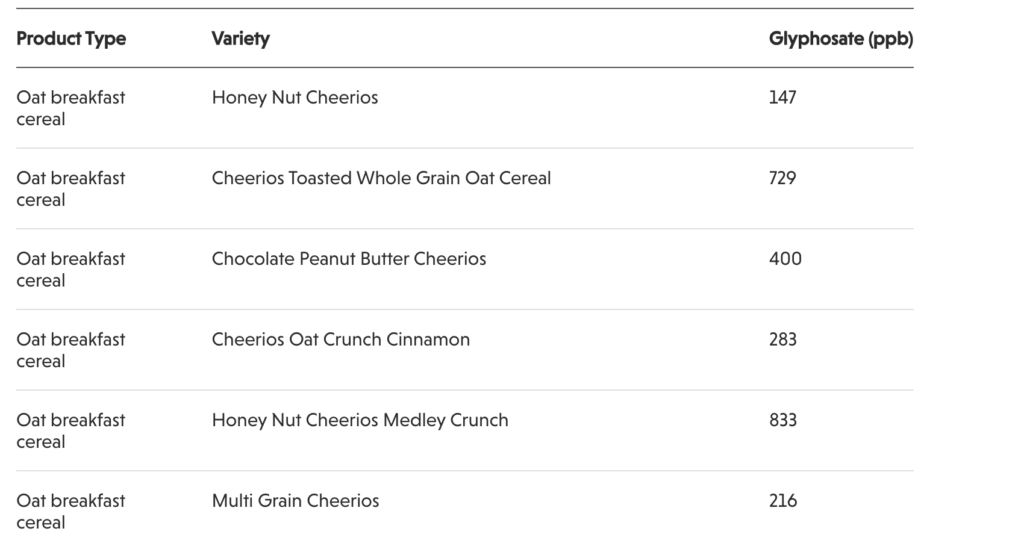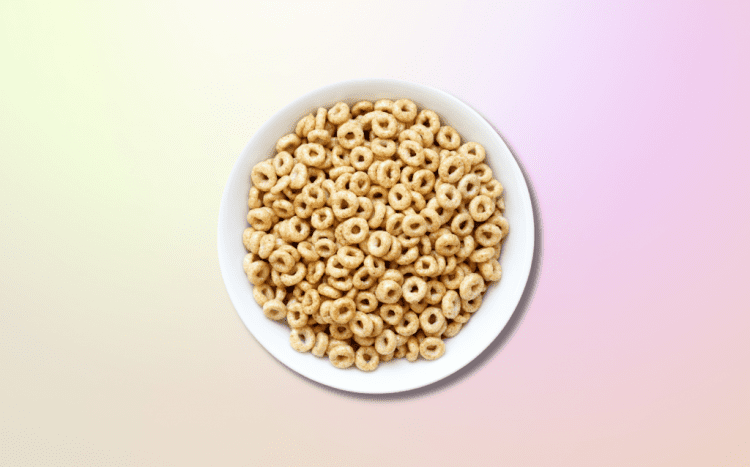Glyphosate in Cheerios? Let’s Talk About It.
I didn’t plan on writing this, but then a TikTok went viral this week that um…presented an opportunity.
It was a (now removed) “foods I’ll never eat again” video, and the creator kicked off her list with a staple in many households, Cheerios.
Her rationale is based on this cereal being “known to have really high glyphosate residues.” She goes on, claiming that this is because Cheerios are made with oats, which are genetically modified (they’re not though), and therefore exposed to more chemicals – like glyphosate.
Why is she calling out glyphosate? Because it’s been linked to cancer.
Whew. Sounds pretty scary, right? Especially since many of us feed Cheerios to our KIDS?! And wait, oats are causing cancer now?!
Before you run to clean out your pantry, let’s get some things straight.
What is glyphosate?
Glyphosate is an herbicide. You probably know it as Roundup. Maybe you’ve even seen people on the internet yelling about Roundup being in your food? I definitely have.
Chatter about glyphosate blew up when a number of civil lawsuits emerged back in 2018, claiming that this chemical causes cancer. The International Agency for Research on Cancer looked into the risks and did, in fact, conclude that glyphosate is “probably carcinogenic to humans.” In other words, they’re saying the risk is possible.
But then, the Environmental Protection Agency (EPA) and European Food Safety Authorities chimed in with their own insight, saying that the herbicide probably wasn’t giving people cancer. Hmm.
Here’s what we do know.
The lawsuits originated from people directly exposed to glyphosate.
The person in the Cheerios TikTok and many others before her always seem to leave this part out. The (mixed) research that makes the connection between glyphosate and cancer pertains to people who are directly exposed to the chemical. The farmers and people who are literally spraying Roundup on the crops. Not people eating food that may contain it.

Source: EWG
How much glyphosate is in Cheerios?
Obviously no one is spraying Cheerios with Roundup before it’s boxed up and shipped to your local grocery store. However, glyphosate is occasionally sprayed on oats as a drying agent. So it’s not surprising that glyphosate has been detected in Cheerios by the EWG, a non-profit activist group.
But how much?
Small amounts. Like really small. Parts per BILLION (ppb) small.
To put it in perspective, an average-sized person would need to eat THOUSANDS of servings of Cheerios every single day to ingest a comparable amount of glyphosate to those who come in direct contact with it and therefore may have an increased risk for cancer.
As they say, the dose makes the poison.
As I’m writing this, the original TikTok is no longer on the creator’s feed. I’ll leave a response by Food Science Babe, a food scientist, here so you can see some of the original comments too.
Fear is a red flag for misinformation
The point of this article isn’t to debate whether or not glyphosate is safe. I’ll never claim to be a food scientist, and I’ll never shame someone for wanting to learn more about ingredients or the impact of chemicals used in our food system.
It’s the fact that the “foods I’ll never eat” videos make my skin crawl. Why? Because they’re almost always used to cause FEAR. I get that this approach gets views, but I instantly question the credibility of the creator anytime I see it.
Is it good to know how to read a label and be aware of what you’re eating? Of course. Do some people need to avoid certain ingredients due to health conditions, food sensitivities, intolerances, etc.? You bet.
But generalizing and calling certain foods BAD or saying they’re “killing you” is irresponsible. These statements completely disregard that each and every one of us has different needs not only physiologically, but also socially and economically.
Why do people eat Cheerios? They’re affordable, shelf stable, accessible, and a good source of iron and fiber. Some families buy them for their picky kids, or to have an easy on-the-go snack for their toddler. They’re WIC-approved and they’re an easy finger food for toddlers working on their pincer grasp.
What good does it do to guilt a parent about feeding their kids Cheerios? Or ANY food? Especially if the amounts they’re consuming are probably far FAR below anything that would significantly increase risk. We can’t ignore that anxiety over food has long term health effects too.
From my POV, it’s much more valuable to educate parents about ways to add variety and MORE nutrition to their family’s diet.

Source by www.blogilates.com


